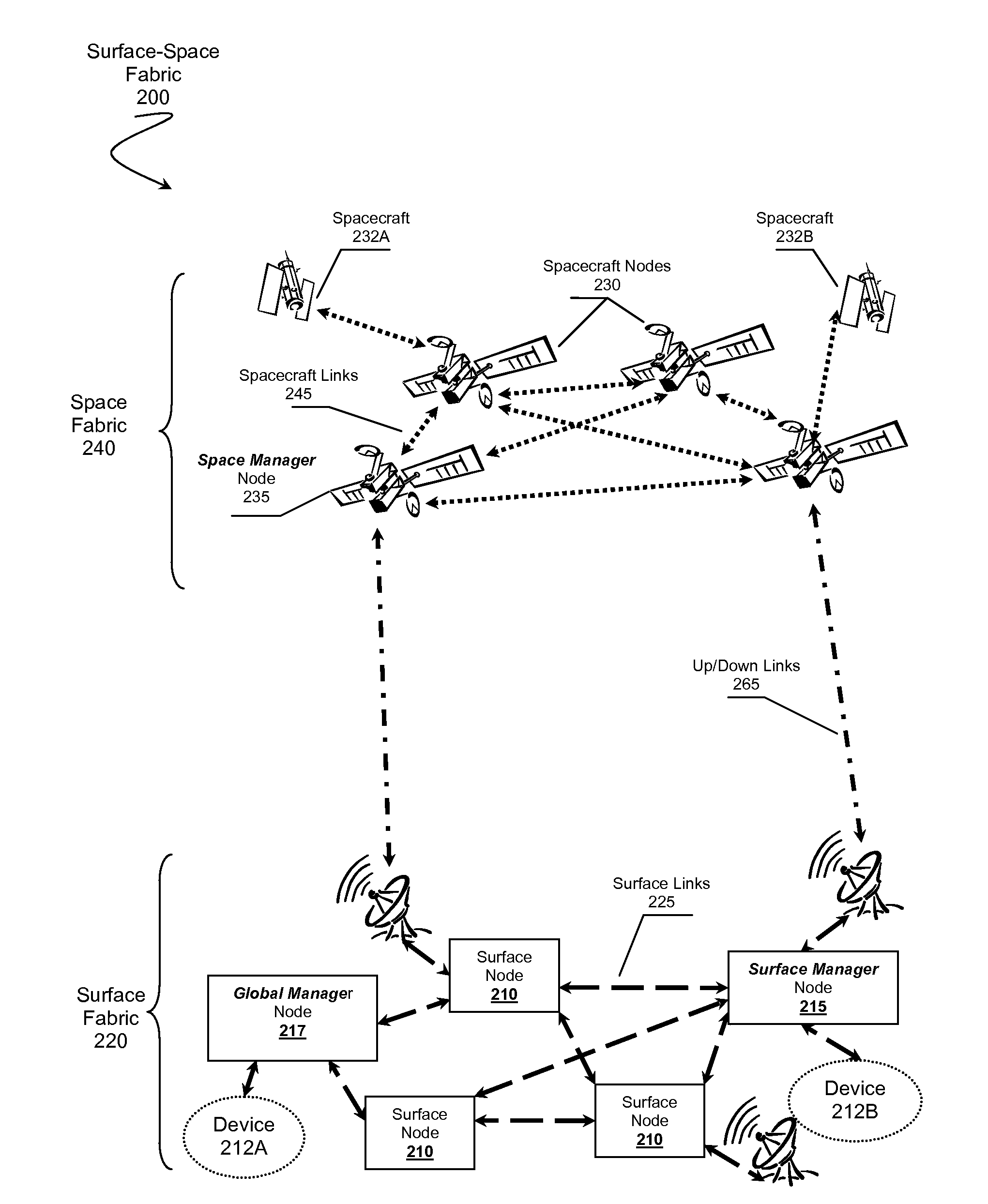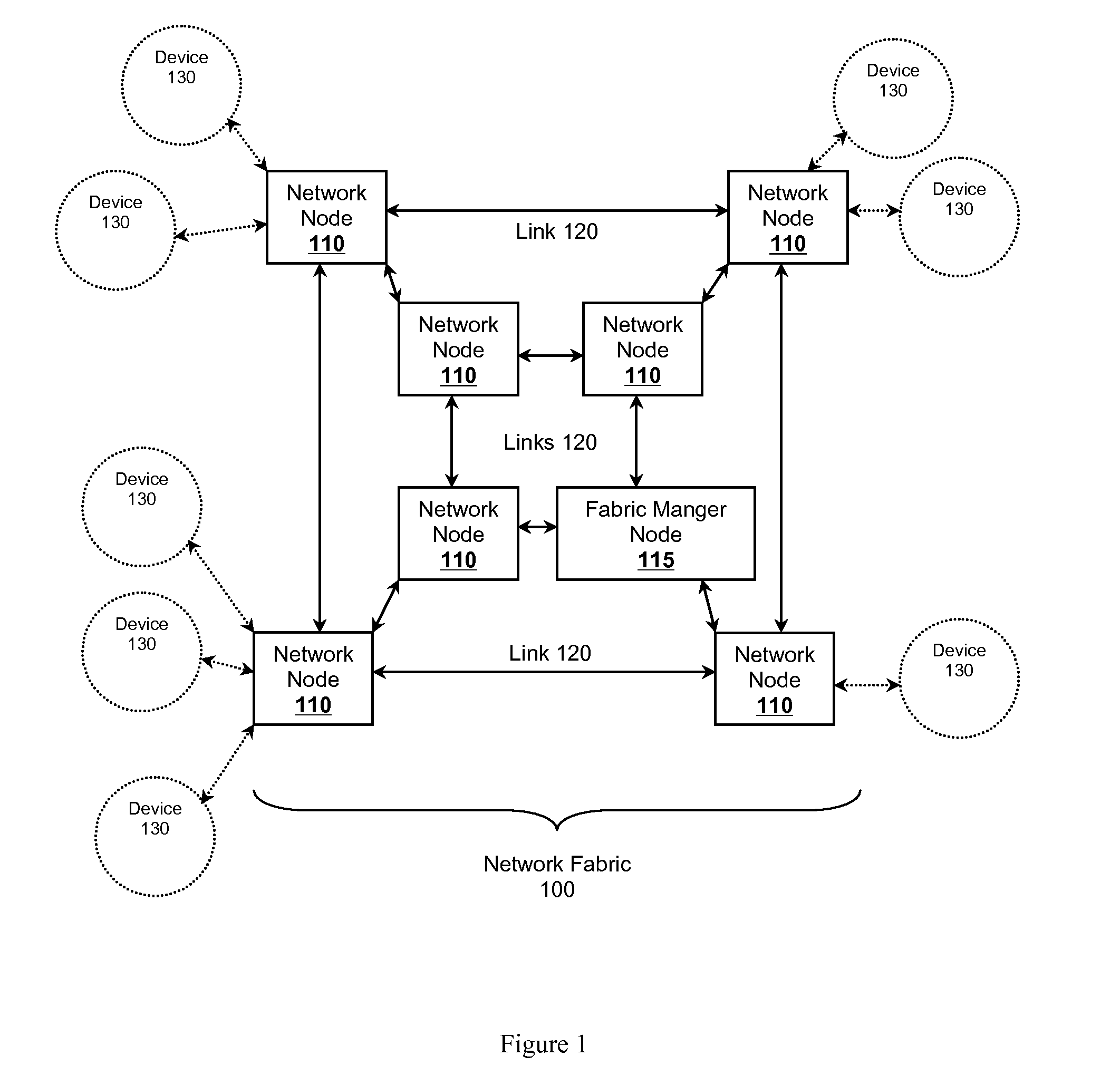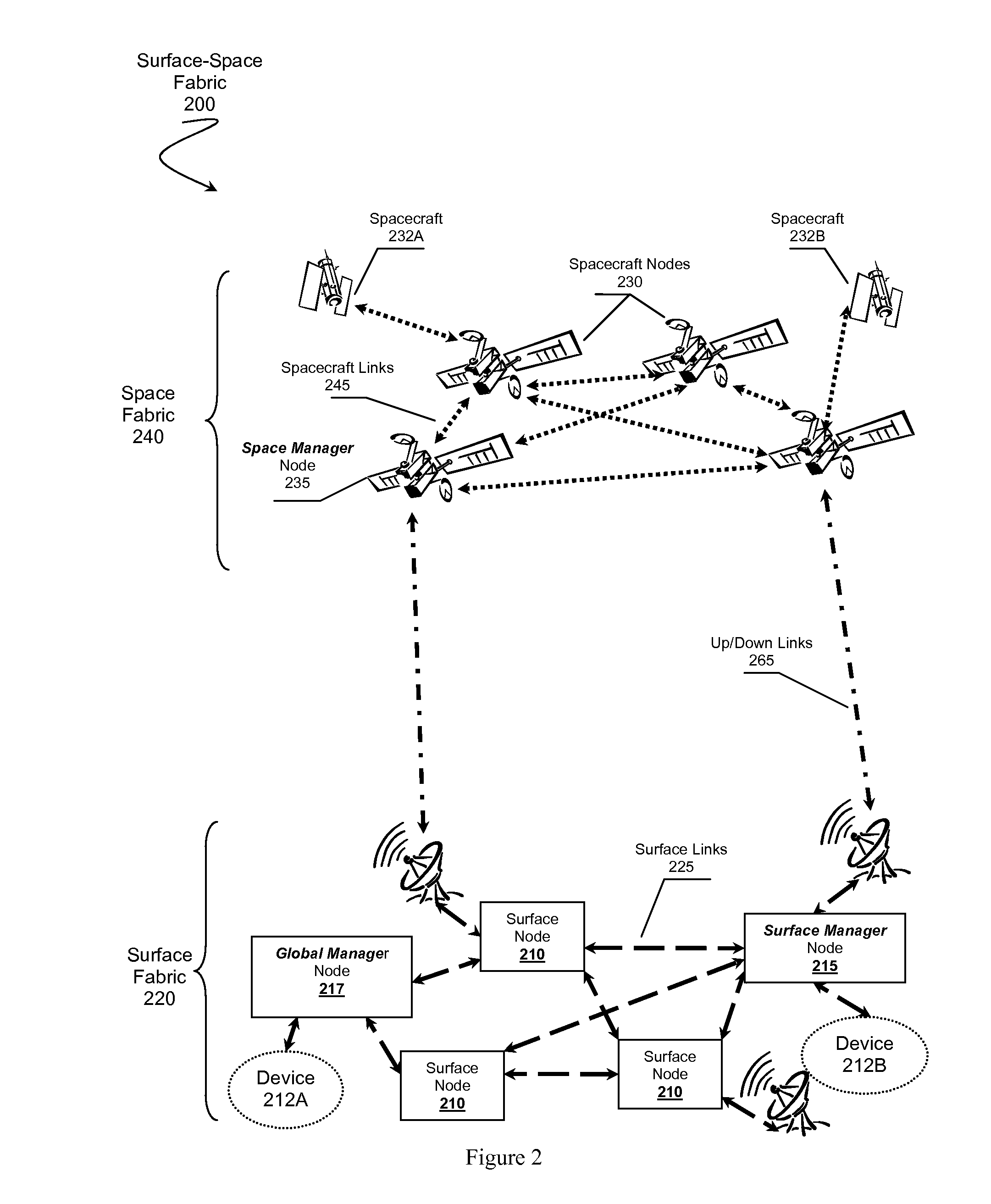Surface-Space Managed Network Fabric
- Summary
- Abstract
- Description
- Claims
- Application Information
AI Technical Summary
Benefits of technology
Problems solved by technology
Method used
Image
Examples
Embodiment Construction
[0022]Although the following description provides examples of network fabrics having a small number of network nodes, communication links, data channels, or data paths, it should be noted that a fabric can comprise any number of nodes, data links, or data channels.
Network Fabric Overview
[0023]The general concepts of a network fabric as presented herein can be equally applied to a network fabrics located in space or on the surface of the Earth, or other massive body. The term “Earth” is used in this document to mean a massive body and should be interpreted to mean a massive body around which another physical object can orbit. Other massive bodies can include moons, planets, stars (e.g., the Sun), asteroids, comets, or other bodies found in or around a solar system.
[0024]In FIG. 1 network fabric 100 comprises a plurality of networked nodes 110 interconnected through a plurality of physical communication links 120 connecting neighboring network nodes. In a preferred embodiment, each li...
PUM
 Login to View More
Login to View More Abstract
Description
Claims
Application Information
 Login to View More
Login to View More - R&D
- Intellectual Property
- Life Sciences
- Materials
- Tech Scout
- Unparalleled Data Quality
- Higher Quality Content
- 60% Fewer Hallucinations
Browse by: Latest US Patents, China's latest patents, Technical Efficacy Thesaurus, Application Domain, Technology Topic, Popular Technical Reports.
© 2025 PatSnap. All rights reserved.Legal|Privacy policy|Modern Slavery Act Transparency Statement|Sitemap|About US| Contact US: help@patsnap.com



